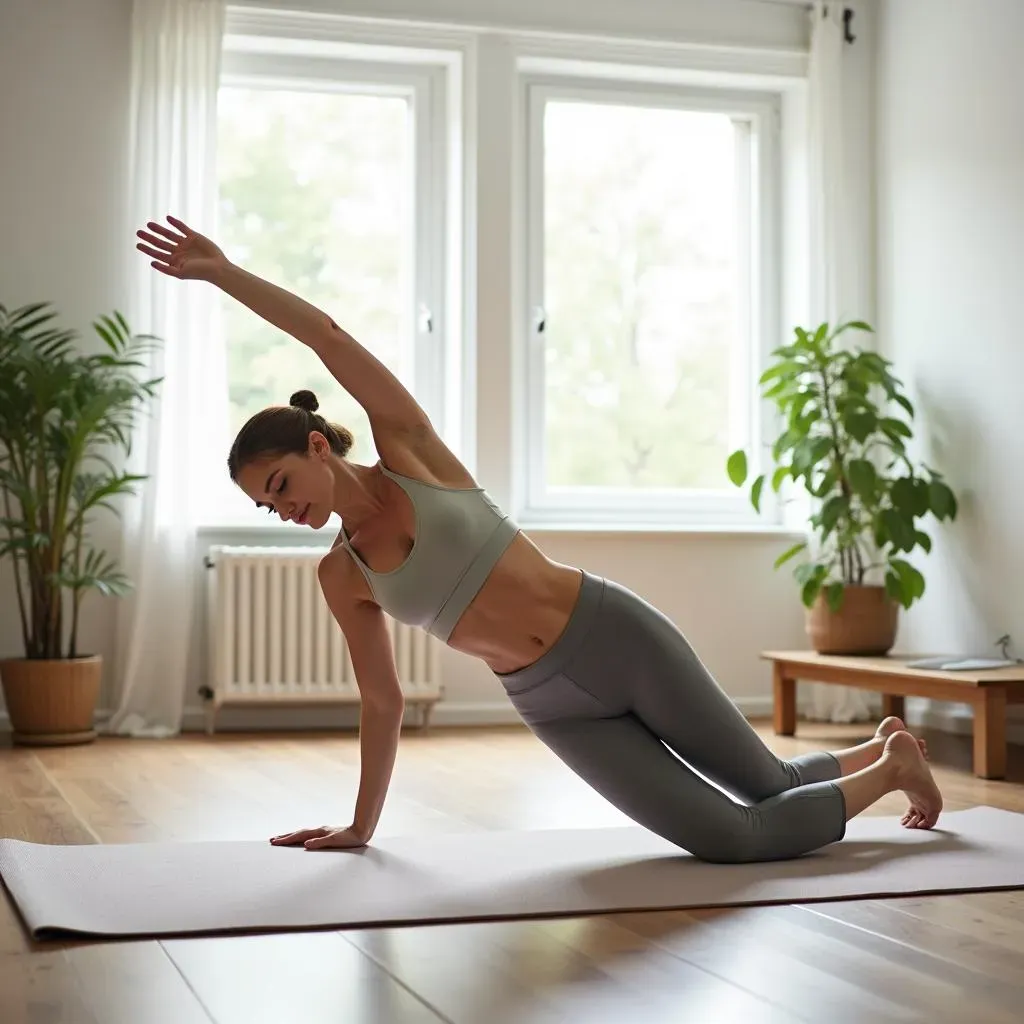Table of Contents
Thinking about getting into pilates but the studio scene feels a bit much, or maybe just too far from the couch? You're not alone. A lot of people want the core strength and flexibility pilates promises without the commute or the class schedule hassle. That's where a solid beginner pilates at home workout comes in. It’s not some mystical practice requiring fancy equipment or years of training. It’s about learning the fundamentals right where you are.
Why Start a Beginner Pilates at Home Workout?
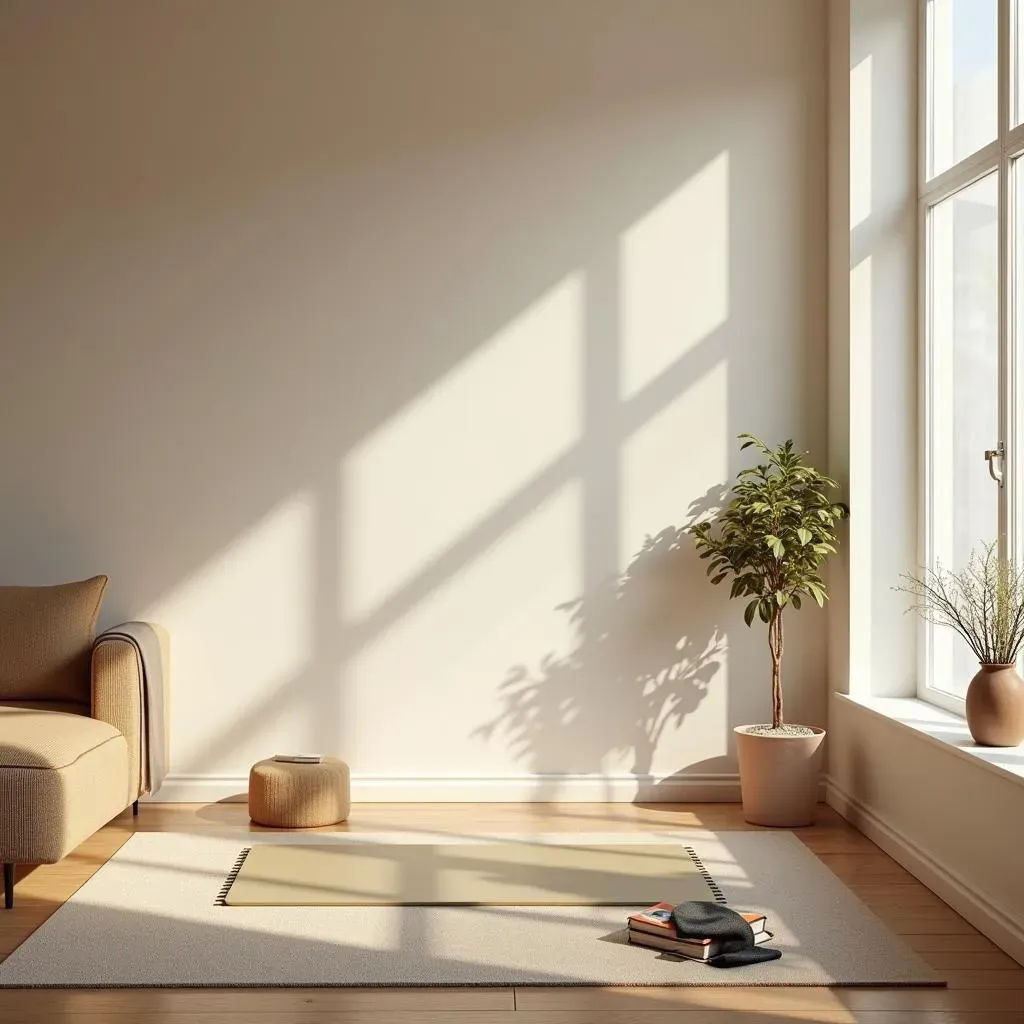
Why Start a Beginner Pilates at Home Workout?
So, you're curious about pilates but the thought of a crowded studio or the cost of classes makes you hesitate? That's totally fair. Starting a beginner pilates at home workout is genuinely one of the smartest moves you can make for your body without turning your life upside down. Think about it: no travel time, no weird class schedules clashing with your plans, and you can wear whatever comfortable (or slightly ridiculous) outfit you want. Beyond the sheer convenience, working out at home lets you learn at your own pace, focusing on getting the movements right rather than trying to keep up with an instructor or the person next to you who's been doing this for years. It’s a low-impact way to build serious core strength, improve your posture, and increase flexibility, all from the comfort of your living room. It's less about breaking a sweat like crazy and more about controlled, precise movements that build long-term strength and body awareness. Plus, saving money on studio fees isn't exactly a downside, is it?
Getting Ready: What You Need for Beginner Pilates at Home
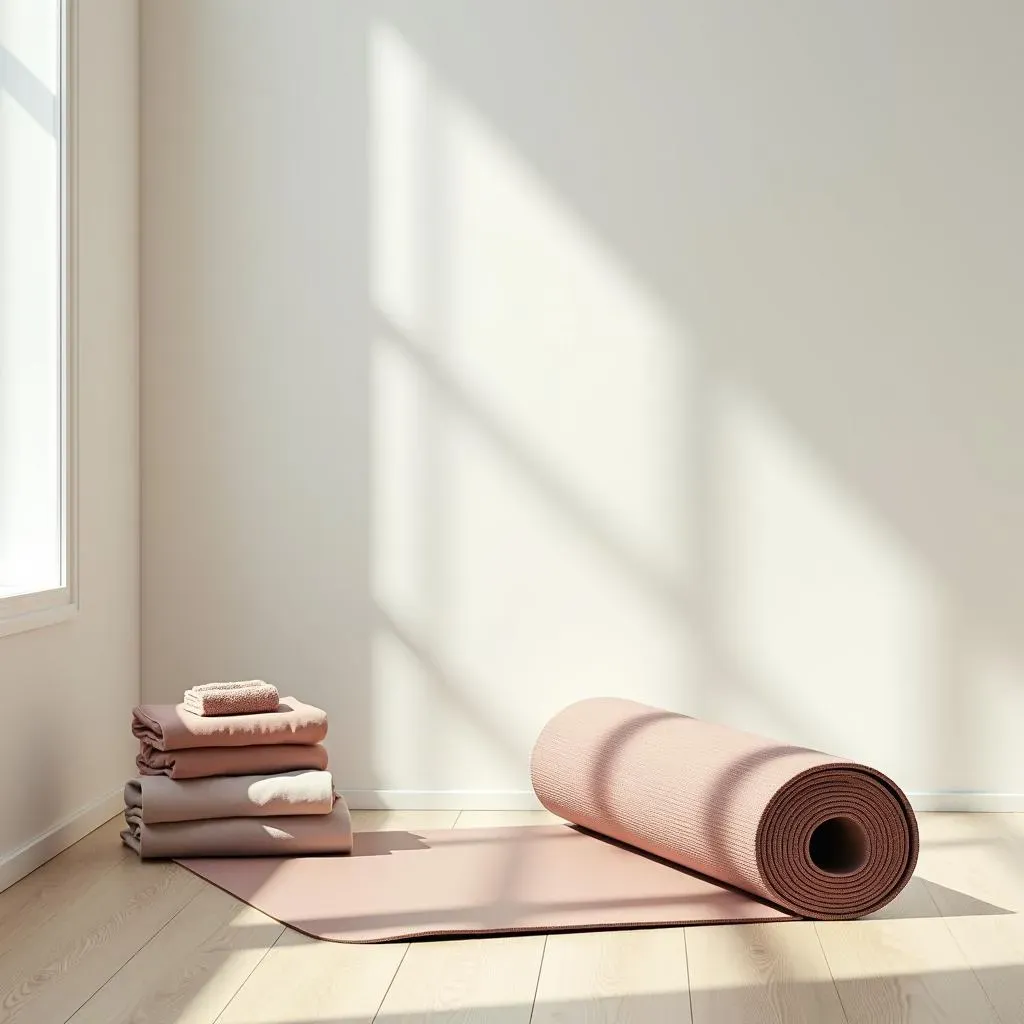
Getting Ready: What You Need for Beginner Pilates at Home
so you're sold on the idea of a beginner pilates at home workout. Great! Now, before you picture needing a whole room dedicated to reformers and strange contraptions, let's talk gear. The beauty of starting pilates at home is that you really don't need much. Forget those infomercials trying to sell you vibrating platforms or resistance bands you'll never use. For pure, foundational pilates, your body weight is the primary tool. A mat? Definitely helpful for cushioning your spine and knees on hard floors. Comfortable clothes you can move freely in? Absolutely essential. Beyond that, maybe a small towel for padding or an optional small cushion for head support depending on the exercise. That's pretty much it to get started with your beginner pilates at home workout journey.
Here's your minimalist shopping list:
- A comfortable mat (yoga mats work fine)
- Clothes you can stretch and roll around in
- Enough clear floor space to lie down fully and extend your limbs
- Optional: a small towel or cushion
Essential Moves for Your Beginner Pilates at Home Workout
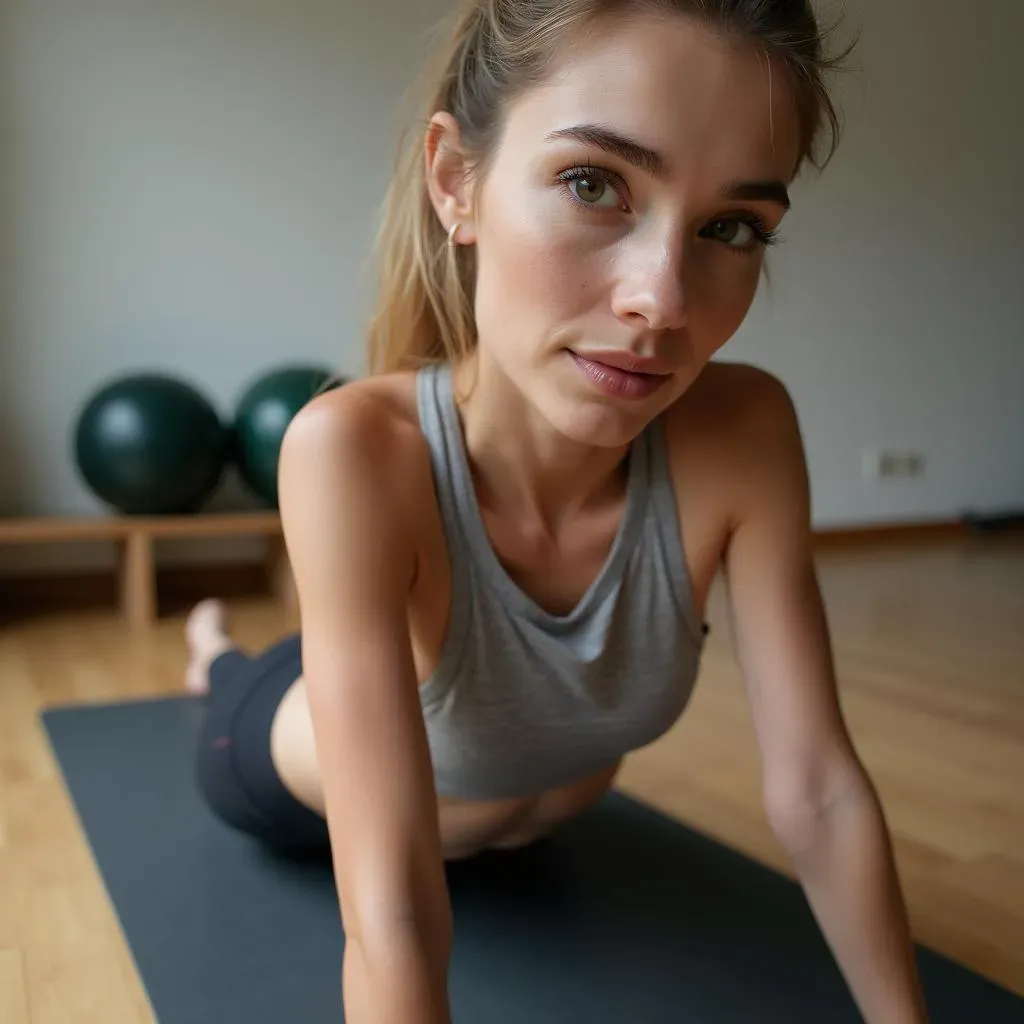
Essential Moves for Your Beginner Pilates at Home Workout
Finding Your Center: The Hundred and Roll-Ups
Alright, so you've got your mat rolled out and some space cleared. Where do you even start with a beginner pilates at home workout? You begin with the basics, the moves that really define what pilates is all about: control, core engagement, and breath. The Hundred is your classic opener. Lie on your back, knees bent at 90 degrees (tabletop position), or legs extended if you feel strong enough. Lift your head and shoulders off the mat, gaze towards your belly button, and pump your arms up and down vigorously by your sides. You inhale for five pumps and exhale for five pumps, doing this ten times for a total of 100 pumps. It sounds simple, but keeping your core pulled in and your lower back pressed into the mat is the real work.
Building Core Strength: Leg Circles and Single Leg Stretch
Once you've woken up your core with The Hundred, it's time to challenge it a bit more. Leg Circles are fantastic for hip mobility and core stability. Lie on your back, one leg extended towards the ceiling (or bent if needed). Circle the leg from the hip, keeping your pelvis stable. The circle doesn't need to be huge; control is key. Do a few circles in one direction, then reverse. Then there's the Single Leg Stretch, part of the "abdominal series." Lie on your back, bring one knee into your chest while extending the other leg long. Switch legs smoothly, pulling the knee in as you extend the other. This move demands serious core control to avoid rocking back and forth. These exercises are fundamental building blocks for any effective beginner pilates at home workout.
Here are a couple of key points to remember:
- Always initiate movement from your core.
- Keep your shoulders relaxed and away from your ears.
- Move with control, not momentum.
Connecting Breath to Movement: The Powerhouse Principle
One thing that sets pilates apart, even in a beginner pilates at home workout, is the emphasis on breath. It’s not just about getting air in and out; it’s about using your breath to support and deepen each movement. Joseph Pilates himself called the core the "powerhouse," and proper breathing activates it. Generally, you exhale on the effort – like lifting a leg or rolling up – and inhale on the release or preparation. Think of your breath as a tool to engage your deepest abdominal muscles. Focusing on this connection between breath and movement turns simple exercises into powerful core work. It takes practice, sure, but paying attention to your breathing makes a huge difference in how effective your beginner pilates at home workout becomes.
Troubleshooting Your Beginner Pilates at Home Workout
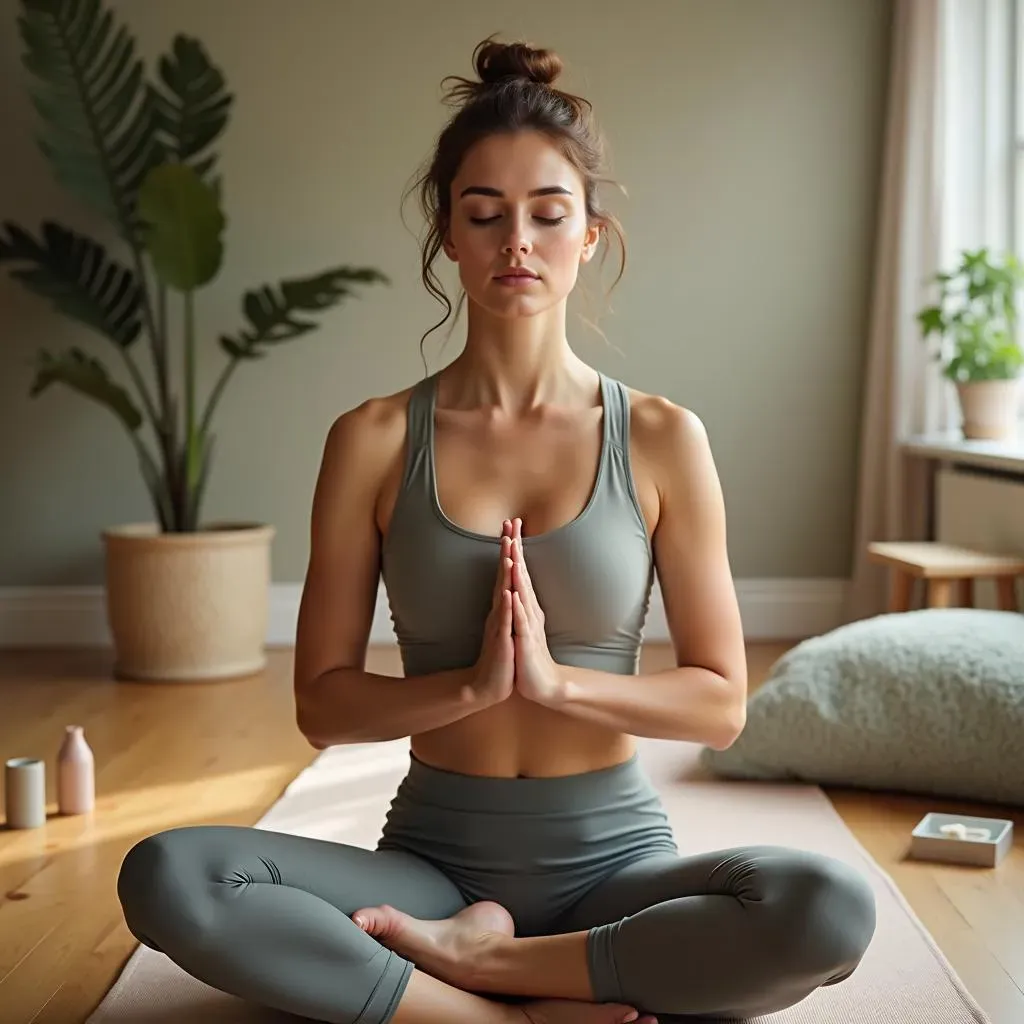
Troubleshooting Your Beginner Pilates at Home Workout
Form Feels Off? You're Not Alone
you've started your beginner pilates at home workout, feeling pretty good about doing The Hundred without leaving your living room. Then you try a Roll-Up, and it feels less like a smooth uncoiling and more like a jerky sit-up gone wrong. Or maybe your lower back is complaining during Leg Circles. This is probably the biggest hurdle when you're learning solo: figuring out if you're actually doing the move correctly. Without an instructor right there to tweak your shoulder placement or tell you to tuck your tailbone a fraction of an inch, it's easy to feel lost. Video tutorials are helpful, but they can't give you real-time feedback. The key here is slowing down. Seriously. Forget doing ten reps quickly. Try doing one rep of a move like the Roll-Up incredibly slowly, focusing on articulating your spine one vertebra at a time. If something feels pinchy or wrong, stop. Re-watch the tutorial, maybe from a different instructor, and pay close attention to cues about engaging your core and protecting your back. Sometimes just a small adjustment makes a massive difference in how the exercise feels and its effectiveness.
Staying Consistent When the Couch Calls
Another common snag with a beginner pilates at home workout? Showing up. Life gets busy, the cat needs attention, that show isn't going to binge-watch itself. Suddenly, your planned mat time disappears. It's easy to lose momentum without a scheduled class time or a workout buddy to hold you accountable. Don't beat yourself up if you miss a day or two. The goal is progress, not perfection. Try scheduling your pilates time like any other appointment. Put it in your calendar. Maybe lay out your mat and clothes the night before. Even a short 15-minute session is better than skipping entirely. Remember why you started – better posture, stronger core, feeling more in control of your body. Reminding yourself of the benefits can be a powerful motivator when the sofa looks particularly inviting.
Common Beginner Pilates At Home Workout Issues:
- Difficulty feeling core engagement
- Lower back discomfort
- Neck strain (especially during abdominal work)
- Lack of flexibility limiting range of motion
- Struggling with breath coordination
Making it Last: Building Your Beginner Pilates Habit and FAQs
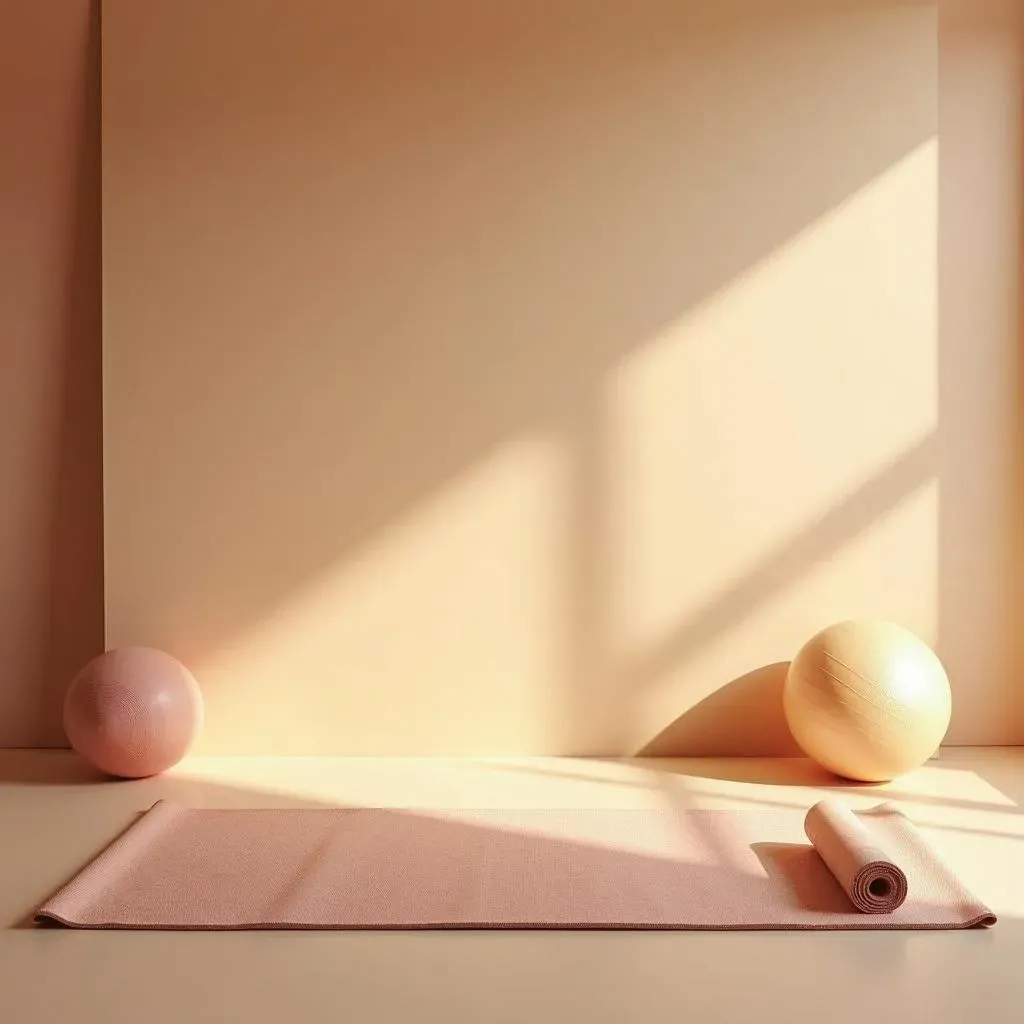
Making it Last: Building Your Beginner Pilates Habit and FAQs
Making Your Mat Time Stick
Alright, you've nailed The Hundred and survived a Roll-Up. The initial excitement of starting your beginner pilates at home workout might wear off, and that’s when the real work begins: making it a habit. Consistency is the magic ingredient here. It's far better to do 15-20 minutes of focused pilates three or four times a week than one epic hour-long session that leaves you sore and discouraged for the next ten days. Find a time that realistically works for you. Is it first thing in the morning before the chaos? During the kids' nap time? Right after work to decompress? Block it out. Treat it like any other important appointment. I used to tell myself I'd do it "sometime today," which usually meant never. Scheduling it for 7:15 AM sharp, even when I really wanted to hit snooze, made all the difference. Some days it still feels like a chore, but showing up is half the battle, and you rarely regret it once you're done.
Burning Questions from the Mat
As you get into your beginner pilates at home workout groove, questions pop up. Like, "Should I really be feeling this in my abs, or is my back taking over?" or "How many times a week is enough?" Let's hit a few common ones. First, feeling it in your abs (your 'powerhouse') is exactly right. If your lower back hurts, you might be arching it too much; focus on gently pulling your naval towards your spine. Neck strain during ab exercises often means you're pulling on your head instead of letting your core lift you; try tucking your chin slightly and imagining a piece of fruit (like a small orange) between your chin and chest. As for frequency, aiming for 3-4 times a week is a solid goal for noticeable progress without burning out. Listen to your body, though. Some days might need a gentler session, or maybe just stretching.
Here are some common beginner pilates at home workout questions and quick answers:
- How long should a session be? Start with 15-20 minutes, build up to 30-45 as you get stronger.
- Is daily pilates okay? If it's low-intensity and feels good, sure, but rest days are important too.
- Do I need special shoes? Nope, barefoot or grippy socks are best for feeling the mat.
- Can pilates help with weight loss? It's not a high-calorie burner like running, but it builds lean muscle and improves body awareness, which can support weight goals.
- What if a move feels impossible? Modify it! Bend your knees, reduce the range of motion. Progress takes time.
Celebrating Small Wins and Staying Inspired
Finally, stick with your beginner pilates at home workout by noticing the progress, no matter how small. Maybe one day you can do a Roll-Up without flailing quite as much, or you hold The Hundred for the full count without wanting to quit. These little victories add up. Don't compare your journey to someone on Instagram doing impossible-looking moves. Your pilates is for you. Find instructors or online resources whose style resonates with you. There are tons out there – some are super chill, others more technical. If you find yourself dreading your mat time, try a different video or focus on a different set of exercises for a session. The goal isn't perfection; it's building a stronger, more flexible, and more aware body, one controlled breath and movement at a time. It's a practice, not a race, and your living room is a perfectly good place to start and keep going.
Your At-Home Pilates Journey Continues
So, you've dipped your toes into the world of beginner pilates at home workout. You've seen it doesn't require a dedicated studio or a pile of expensive gear. It starts with understanding a few core principles, finding some space, and committing to showing up for yourself. Building this practice takes time and consistency, like anything worthwhile. There will be days it feels easy, days it feels like a challenge, and days you just don't feel like doing it. That's normal. The point isn't perfection; it's progress, one controlled movement at a time. Keep exploring the moves, listen to your body, and remember why you started this in the first place. Your mat is waiting.
